In-depth anatomy of Python functions
This article mainly introduces the in-depth anatomy of Python functions. The editor thinks it is quite good, so I will share it with you now and give it as a reference. Let’s follow the editor and take a look.
1. Creation and calling of functions
Define functions, don’t know how To execute the function;
If you want to execute the function, you need to call the function: Method to call the function: function name ()
1, () Create a function without parameters; call the function and execute the code in the function
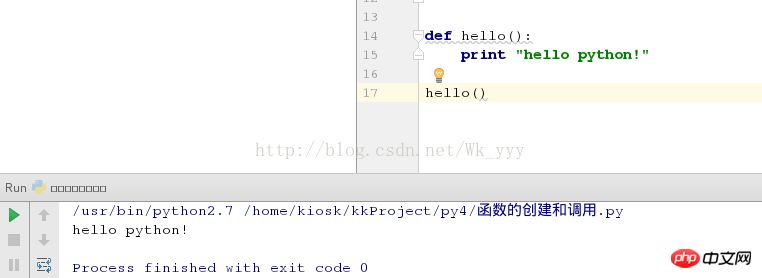
##2. Addition function: formal parameters are in parentheses; values must be passed; actual parameters are in add

Square function; the formal parameters are in parentheses; x is called a required parameter, and a value must be passed; y=2 is called the default parameter. You can pass a value. If no value is passed, the default value is
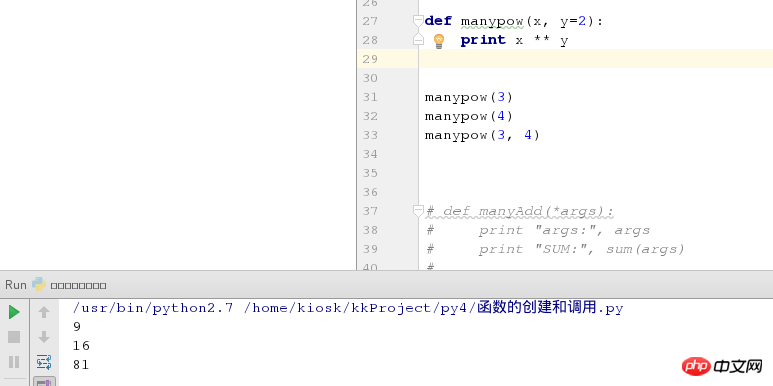
##4,
Multi-value addition: formal parameters are in parentheses; *args are called variable parameters, and multiple values can be passed, args is the data type of the tuple
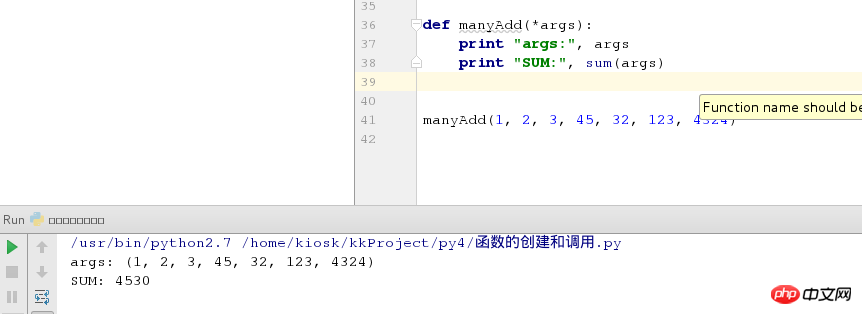
##5,
are called keyword parameters. Multiple key-value values can be passed when calling; kwargs is the data type of dictionary
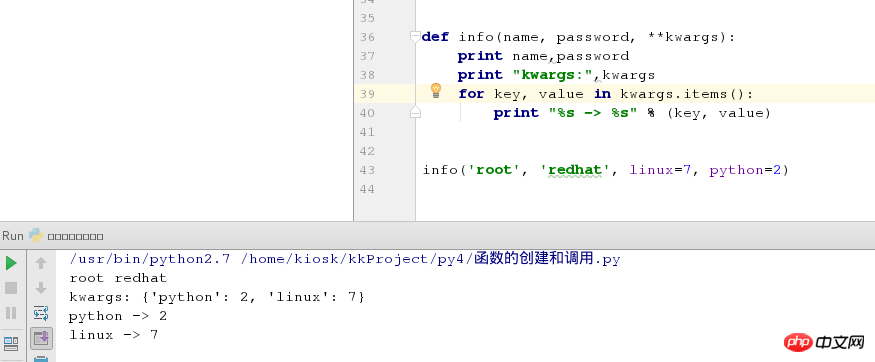 ##Note: When there are multiple formal parameters , Order: Required parameters>Default parameters>Variable parameters>Keywords
##Note: When there are multiple formal parameters , Order: Required parameters>Default parameters>Variable parameters>Keywords
#2. The return value of the function
1. Functions generally have return Return value; if you want to print the return value, you must print
2. In python, if When there is no return, a None is returned by default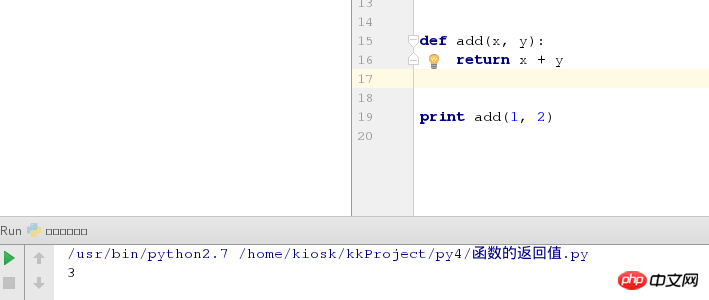
##3,  return default
return default
can only return one value; if
return must return multiple values, it will encapsulate these multiple values into a tuple and return minMax is the tuple type
##4,
Once the function encounters 
return
print function name () is used to print the function return value
3. Unpacking the actual parameters of the function
1. List unpacking *list name
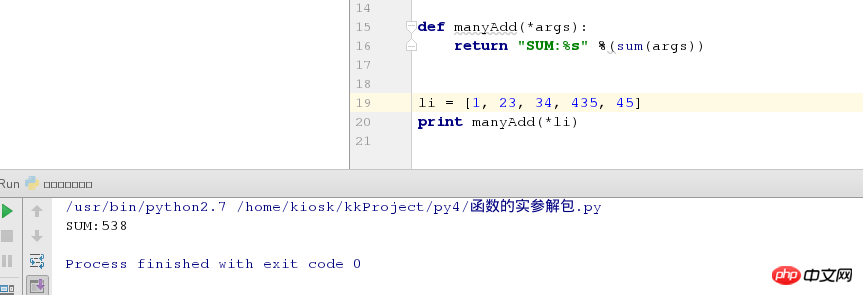
2. Dictionary unpacking**Dictionary name
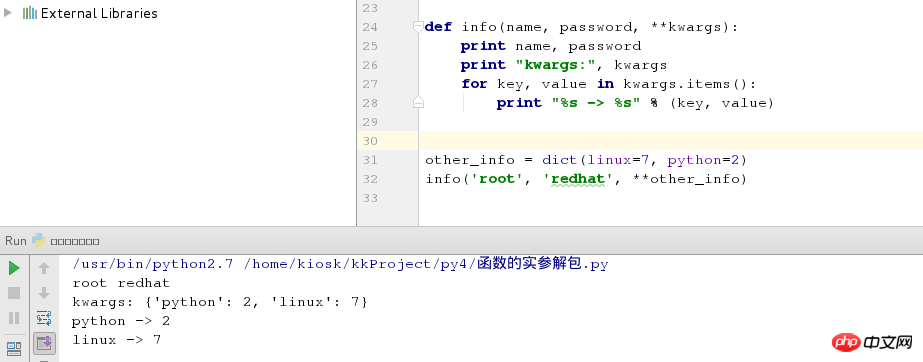
4. Scope of function
1. count=100 global variables, count=200 local variables; the variables in the function only take effect inside the function
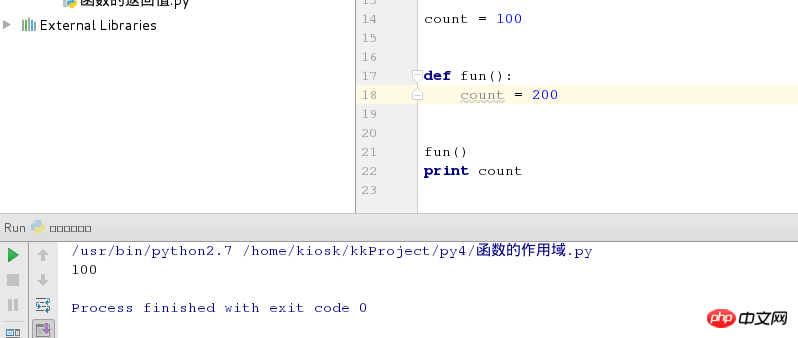
2. An error will be reported when outputting between global variables and local variables
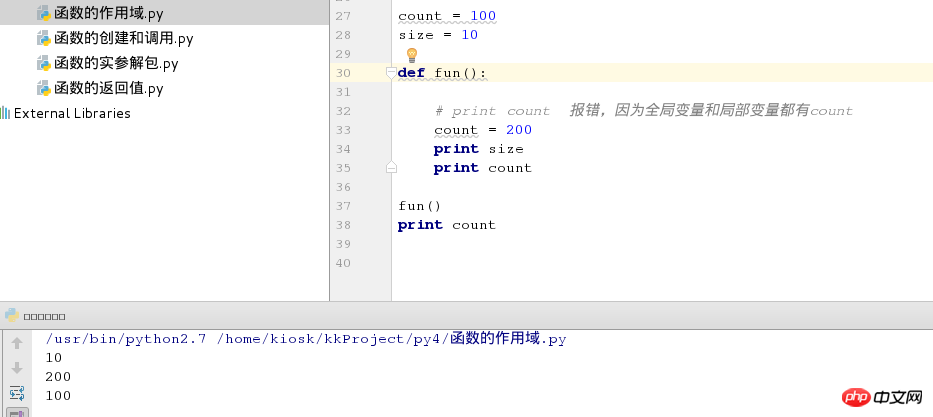
3. global is the keyword to declare local variables as global variables
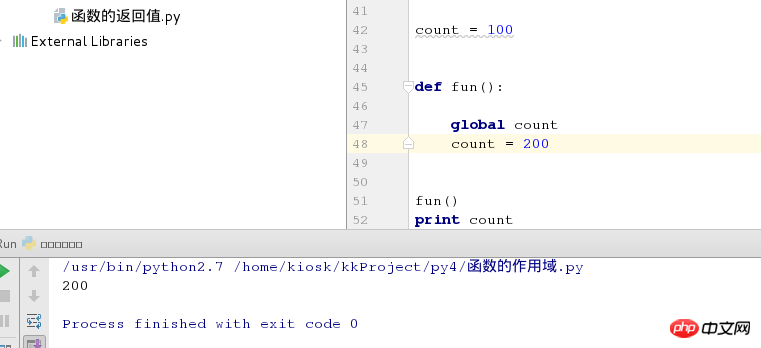
5. Function Application
1. NetEase Interview: Enter a word, the length is less than 100 , determine whether the word is composed entirely of uppercase letters and does not have two consecutive repeated letters. If so, output 'Like', otherwise output 'Dislike'
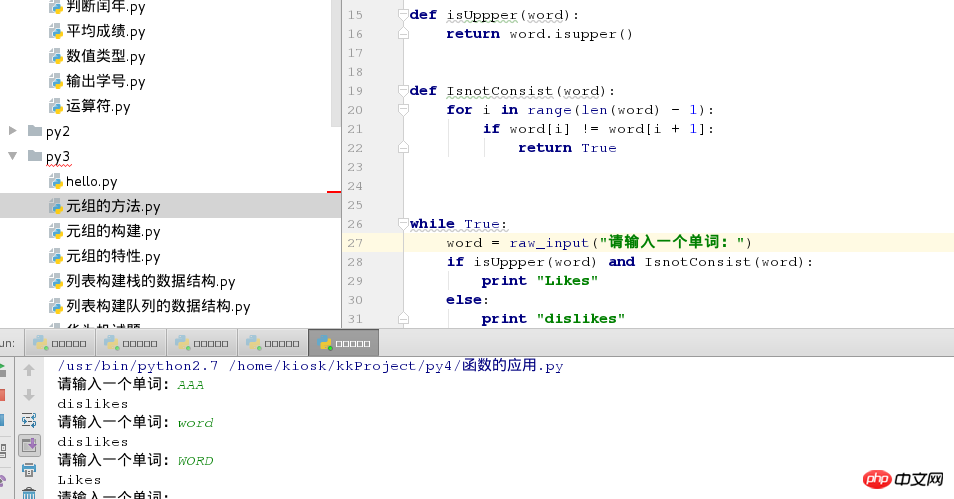
# 6. Use of functions -Implement the switch judgment statement through a dictionary
The meaning of an exception thrown: Let the original normal code report an error without performing the following operations
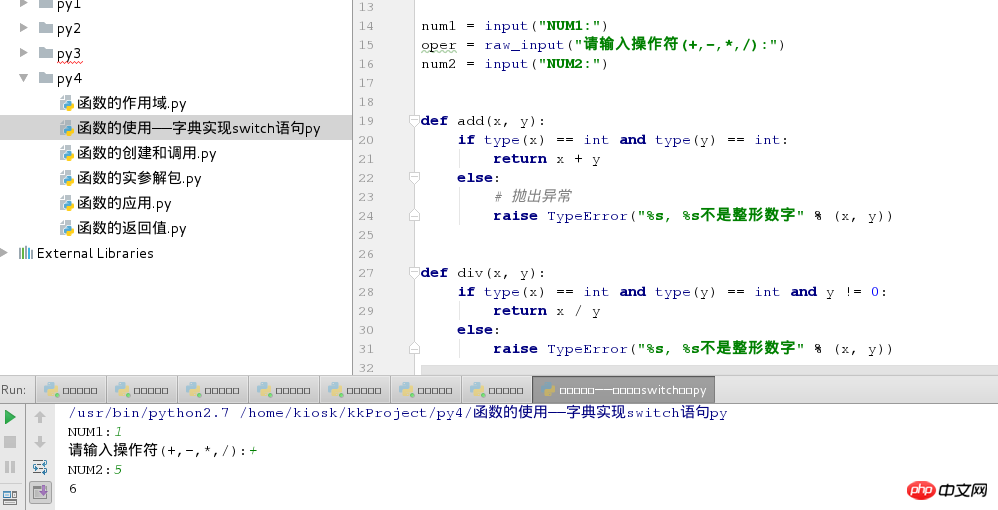
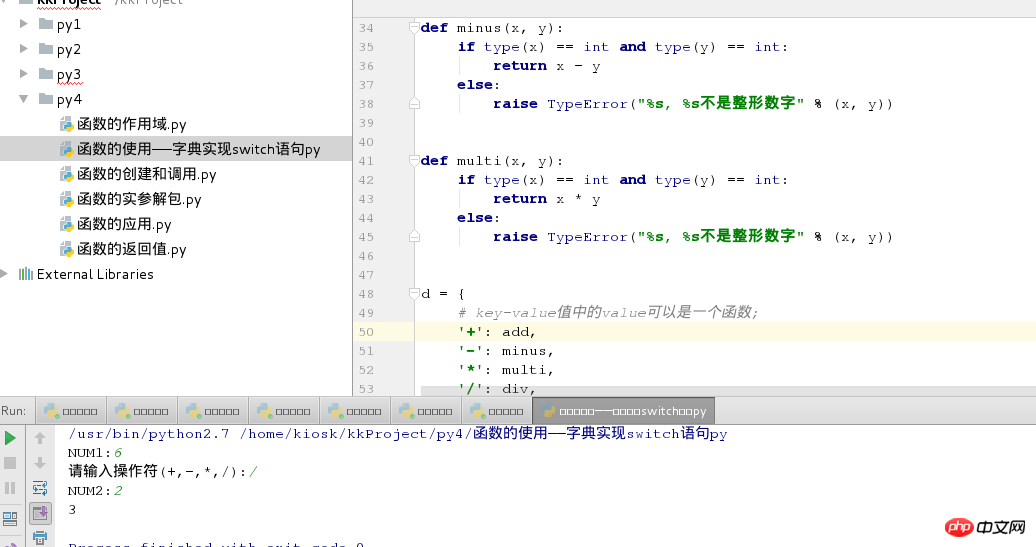
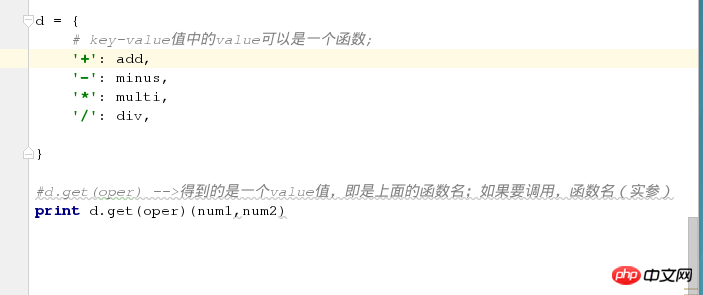
isinstance method:
Format: (element to be judged, data type); return bool value

# 8. The default parameters of the function cannot be variable parameters
As shown below:
should Each time the output is called, an END is added to the empty list; the output is always an END; but it is actually being appended, so variable parameters cannot be used
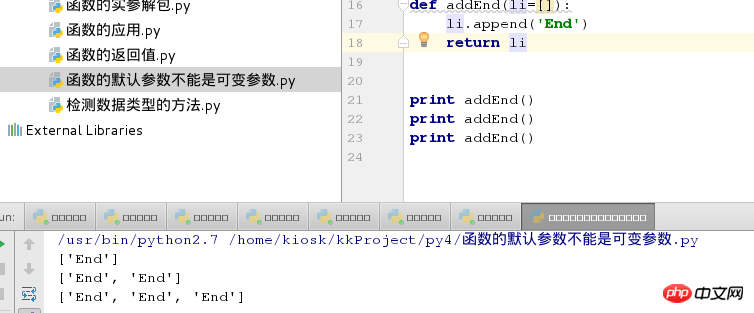
The above is the detailed content of In-depth anatomy of Python functions. For more information, please follow other related articles on the PHP Chinese website!

Hot AI Tools

Undresser.AI Undress
AI-powered app for creating realistic nude photos

AI Clothes Remover
Online AI tool for removing clothes from photos.

Undress AI Tool
Undress images for free

Clothoff.io
AI clothes remover

Video Face Swap
Swap faces in any video effortlessly with our completely free AI face swap tool!

Hot Article

Hot Tools

Notepad++7.3.1
Easy-to-use and free code editor

SublimeText3 Chinese version
Chinese version, very easy to use

Zend Studio 13.0.1
Powerful PHP integrated development environment

Dreamweaver CS6
Visual web development tools

SublimeText3 Mac version
God-level code editing software (SublimeText3)

Hot Topics
 PHP and Python: Different Paradigms Explained
Apr 18, 2025 am 12:26 AM
PHP and Python: Different Paradigms Explained
Apr 18, 2025 am 12:26 AM
PHP is mainly procedural programming, but also supports object-oriented programming (OOP); Python supports a variety of paradigms, including OOP, functional and procedural programming. PHP is suitable for web development, and Python is suitable for a variety of applications such as data analysis and machine learning.
 Choosing Between PHP and Python: A Guide
Apr 18, 2025 am 12:24 AM
Choosing Between PHP and Python: A Guide
Apr 18, 2025 am 12:24 AM
PHP is suitable for web development and rapid prototyping, and Python is suitable for data science and machine learning. 1.PHP is used for dynamic web development, with simple syntax and suitable for rapid development. 2. Python has concise syntax, is suitable for multiple fields, and has a strong library ecosystem.
 Python vs. JavaScript: The Learning Curve and Ease of Use
Apr 16, 2025 am 12:12 AM
Python vs. JavaScript: The Learning Curve and Ease of Use
Apr 16, 2025 am 12:12 AM
Python is more suitable for beginners, with a smooth learning curve and concise syntax; JavaScript is suitable for front-end development, with a steep learning curve and flexible syntax. 1. Python syntax is intuitive and suitable for data science and back-end development. 2. JavaScript is flexible and widely used in front-end and server-side programming.
 PHP and Python: A Deep Dive into Their History
Apr 18, 2025 am 12:25 AM
PHP and Python: A Deep Dive into Their History
Apr 18, 2025 am 12:25 AM
PHP originated in 1994 and was developed by RasmusLerdorf. It was originally used to track website visitors and gradually evolved into a server-side scripting language and was widely used in web development. Python was developed by Guidovan Rossum in the late 1980s and was first released in 1991. It emphasizes code readability and simplicity, and is suitable for scientific computing, data analysis and other fields.
 Can vs code run in Windows 8
Apr 15, 2025 pm 07:24 PM
Can vs code run in Windows 8
Apr 15, 2025 pm 07:24 PM
VS Code can run on Windows 8, but the experience may not be great. First make sure the system has been updated to the latest patch, then download the VS Code installation package that matches the system architecture and install it as prompted. After installation, be aware that some extensions may be incompatible with Windows 8 and need to look for alternative extensions or use newer Windows systems in a virtual machine. Install the necessary extensions to check whether they work properly. Although VS Code is feasible on Windows 8, it is recommended to upgrade to a newer Windows system for a better development experience and security.
 Can visual studio code be used in python
Apr 15, 2025 pm 08:18 PM
Can visual studio code be used in python
Apr 15, 2025 pm 08:18 PM
VS Code can be used to write Python and provides many features that make it an ideal tool for developing Python applications. It allows users to: install Python extensions to get functions such as code completion, syntax highlighting, and debugging. Use the debugger to track code step by step, find and fix errors. Integrate Git for version control. Use code formatting tools to maintain code consistency. Use the Linting tool to spot potential problems ahead of time.
 How to run python with notepad
Apr 16, 2025 pm 07:33 PM
How to run python with notepad
Apr 16, 2025 pm 07:33 PM
Running Python code in Notepad requires the Python executable and NppExec plug-in to be installed. After installing Python and adding PATH to it, configure the command "python" and the parameter "{CURRENT_DIRECTORY}{FILE_NAME}" in the NppExec plug-in to run Python code in Notepad through the shortcut key "F6".
 Is the vscode extension malicious?
Apr 15, 2025 pm 07:57 PM
Is the vscode extension malicious?
Apr 15, 2025 pm 07:57 PM
VS Code extensions pose malicious risks, such as hiding malicious code, exploiting vulnerabilities, and masturbating as legitimate extensions. Methods to identify malicious extensions include: checking publishers, reading comments, checking code, and installing with caution. Security measures also include: security awareness, good habits, regular updates and antivirus software.






